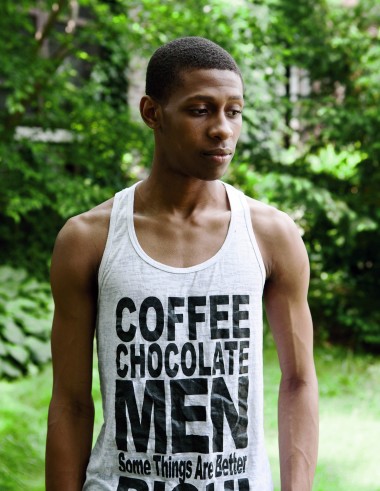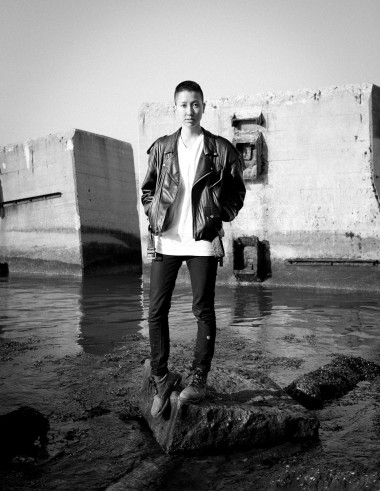Sarah, 19, Brooklyn, NY
In Japan, if you have tattoos you’re in the mafia. When I saw my grandmother in Japan I had to cover mine up because she’d reject me as part of the family. I also couldn’t tell my grandmother I was gay. Having tattoos and being gay and going to art school? She’d be like, “What are you doing with your life?”
I’m half Japanese and half white. When I’m in America I feel more Japanese, but when I go to Japan I feel really white. It’s strange because I don’t really have a home. My mom has lived in America for 30 years but says she views her time here as an extended vacation. I asked her if she wants to move back to Japan, but she said she’s too old at this point. She’s basically cut off ties with my dad, so I told her she should do what she wants.
I was born and raised in Minnesota, but I didn’t really speak English until I was five. Now English is my primary language. I think in English. I dream in English. My Japanese is slowly fading.
My father doesn’t speak Japanese and my mom’s English is pretty bad. Growing up, I’d talk to my mother in Japanese and my father in English. We were rarely able to communicate as a group.
I’m really tight with my mom, and she’s awesome. Now I don’t really talk to my dad. His personality and my personality don’t get along well. I haven’t talked to my dad about being gay because we don’t talk, but I think he knows.
My mom knows and she understands and is awesome. In emails she told me, “I accept who you are, blah blah blah.” But a month ago she asked me, “Are you having gender troubles? Do you want to convert genders? Is it because of your father? Do you want to be a man?” And I told her, “It’s okay, I like being a girl, relax.” I had to calm her down a little bit.
I don’t think I officially ever came out. It was more of a gradual process. Straight kids don’t have to announce their sexuality, so I don’t think I should have to either. My junior year of high school I went to Oxbow, an arts program in California that has students from all over the country. I guess it was that classic coming-of-age experience for me. It was the first time I was independent and I had to figure out how to live. After that I started being more open about being gay.
Since I moved to New York I started being part of the queer community more. My roommate Mars and I started going to concerts, shows, fundraisers and political things a couple nights a week — whatever was happening. Minnesota has a queer community, but it’s not as visible and accessible as in New York.
I definitely chose my college based on location and the whole experience of living in New York, including the queer scene. I applied to the Cooper Union when I was a senior in high school and was rejected, so instead I went to the School of Visual Arts, but I figured I’d apply a second time to Cooper Union as a transfer student. I didn’t expect to get in, but I did. I was really surprised.
I’m going to be studying fine arts and visual arts in general. I don’t really know what I want to do career-wise, but I’ll figure it out along the way. When I grow up I want to be relevant.
As told to Diana Scholl.
Photo by Laurel Golio, taken in Brooklyn, NY, 2012
To tell your story, email hello@wearetheyouth.org
Sarah Covers Dyke March: NYC PRIDE
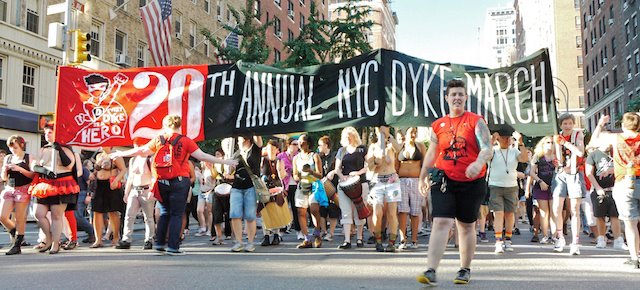
Dyke March, NYC Pride, June 25, 2012
New York, NY
by Sarah Nakano, Photo by Cara Howe
This weekend was a whirlwind! This was my first time in New York during Pride Month so there was a lot of new experiences for me– most notably the 20th Annual NYC Dyke March on Saturday, June 23rd. As a volunteer marshal, my job was to basically just to help block traffic, make sure the march went as planned, cheer people on, high-five people, etc. I had been going to planning meetings occasionally for the past couple months in preparation for Saturday. We marched from Bryant Park, near the New York Public Library to the fountain in Washington Square Park. Overall the march went really well with no obstacles, issues with the police, or fights. Technically the march is a protest without a permit, so it’s illegal and an arrestable action. However, the march has been happening for 20 years now so it’s really become a historic event. The police that I encountered were all pretty supportive and understanding.
At the core of the Dyke March mentality is the idea of protest – against discrimination, harassment, violence, and inequality in various settings: schools, workplaces, family, social, in the streets, etc. It is a declaration of our right to exist, to own the street, to feel liberated and to be oneself in an environment of inclusivity and community. It’s the day that the minority seizes the center. Gabrielle Korn, who is on the planning committee said to the Huffington Post, “It’s important for dykes to claim space and to take up as much space and be as loud and as visible as possible. I think you have to be as public about what you’re fighting for as you can be.” You can read more of what she said here.
My experience of marching was incredibly powerful and surprisingly emotional.This time last year I was living in the Midwest (where I grew up), and on Saturday I was surrounded by 20,000 women taking over Fifth Avenue– what? If you didn’t come march with // support from the side this year, be sure to come next year!
Sarah Reports on The Transatlantic Pride Art Exhibition!

The Annual Transatlantic Pride Art Exhibition, June 21st, 2012
Clifford Chance, New York, NY
by Sarah Nakano
Last Thursday night, Clifford Chance, a law firm in midtown, had an opening reception for their in-office exhibit “Annual Pride Art Exhibition-New York,” featuring 5 portraits of We are the Youth participants. This opening reception gave me the opportunity to see lots of cool art (Cass Bird, Peter Hujar, Elizabeth Bethea, Tee A. Corinne, etc), drink Coca Cola out of a fancy glass, and also witness the wisdom of Jonathan D. Katz.
Before the reception, Katz spoke about specific “queer artworks” and explored the context and details of each piece. Katz was the first tenured faculty in gay and lesbian studies in the U.S, founder of the Harvey Milk Institute, chair of the Department of Lesbian and Gay studies at the City College of San Francisco, co-founder of Queer Nation SF, and is the co-curator of the exhibit ‘HIDE / SEEK’. Basically he’s a certified genius and he’s the king of the middle of
the venn diagram: QUEER and ART.In my opinion the most interesting idea he talked about was the future of “Queer Art.” What is contemporary queer art, where is it headed, what will it look like in the future? From what I understood, he thinks that as LGBTQ issues + people become more widely accepted, queer art will start to focus more on universal themes like love, loss, etc. I was incredibly impressed with Katz’s insights and how incredibly informed he was. What a badass. You can check out his essays, writings, and resume here.
Overall it was a rewarding experience and it was so cool to see Magda, Trevor, Braxton, Isaac, and Patrick chillin on the wall alongside other queer art.
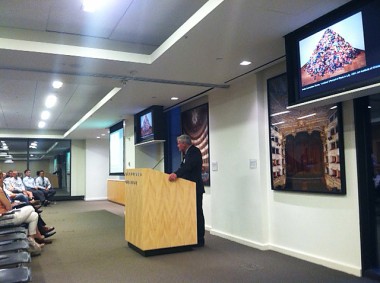
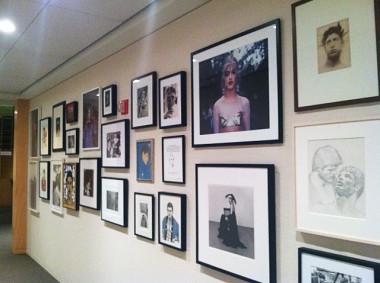
Q+A with James Howe, Addie on the Inside and The Misfits
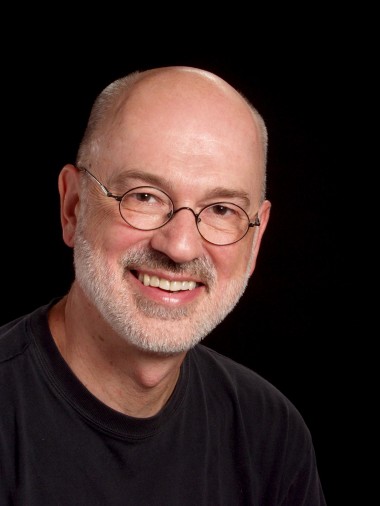
We Are the Youth Book Club: An Interview with James Howe, author of Addie on the Inside and The Misfits.
James Howe has written more than 80 young adult novels. But it was The Misfits (2001) and sequels Totally Joe (2005) and Addie on the Inside (2011) that established Howe as an advocate for LGBT youth and other young outsiders. The Misfits characters, an eclectic group of outsiders, celebrated “No Name-Calling Day” at their middle school, which served as inspiration for No Name-Calling Week, an annual event sponsored by The Gay, Lesbian & Straight Education Network (GLSEN) to open up a dialogue about taunting and bullying. Howe, 65, is currently working on his fourth book in the series, Also Known As Elvis, which is expected to be released in 2013 or 2014.
In honor of No Name-Calling Week, taking place from January 23-27, Howe talked to We Are the Youth about coming out at age 51, writing about middle schoolers, and recent changes in how gay youth are treated in literature.
How did No Name-Calling Week come about?
After I came out, I wanted to get involved with the gay community, and GLSEN looked like a natural fit for me. I began doing some workshops for them, and speaking at their conferences. Then when The Misfits was published, GLSEN picked up on the book and wanted to use it as a vehicle for No Name-Calling Week.
No Name-Calling Week started in 2004. The second year No Name-Calling Week came under attack on a national level, because the book had a gay character, and GLSEN was a sponsor. There was a story on CNN about it, where I was referred to as “openly gay author James Howe” which, when you’ve spent most of your life in the closet, is a pretty cool thing. (more…)
Jahmal, 20, Brooklyn, NY
I moved out of my family house my junior year of high school. I was doing a lot of outside things my family didn’t agree with, and they gave me the ultimatum. At that point I could support myself through ballet and modeling for the adult entertainment industry. Ironically, the modeling was also the thing they didn’t agree with.
I started modeling when a promoter saw me at a club in Cincinnati, where I grew up. At first I did a lot of underwear modeling, and after I turned 18 I started doing nude photography.
I was very hesitant at first. At that point I had started developing myself professionally as a dancer, and nude photography can tear someone’s career apart. I don’t do it anymore because I’m even further in my career as a dancer. People started to notice me from some of the modeling work I was doing. Even recently, a well-known dancer came across something, and it made me scared a little bit that she saw something I did years ago.
But it was great money, free traveling and a lot of extra perks I was liking. Living with my family, I was so closed off to a lot of things. I started going out and meeting different people from different cultures. I was attracted to the fast, fun lifestyle that came with modeling. I was young. It made it even better, all the attention that it brought from males.
As I started to get more work, I just decided to tell everyone at my high school I was gay. Once I did come out, a lot of people came out themselves. I was very popular at the high school with people thinking I was straight, and after I came out other people did too. They knew they could come to me if they had questions.
During this time, I was also on an MTV reality show. It was kind of like Fame and it was produced by Nick Lachey. I was just a background dancer, but people would notice me. I hosted a party for Cincinnati Gay Pride. I chose to wear these very bright orange stilettos and booty shorts. I was walking in the Pride parade, and I wasn’t aware a news camera was filming me. My father was watching the news and saw me walking in my orange stilettos. He had no knowledge prior to that of me being gay. He, of course, didn’t want to have anything to do with me afterwards. For a year we didn’t talk. But he saw I was standing my ground and didn’t need his approval. Our relationship got a lot better. I don’t think he wanted to lose his son because of my sexual preference. Now my family comes to New York to see my shows. They’re pretty supportive now.
I started dancing my sophomore year of high school. I was at a performing arts high school, and one of my best friends invited me to the dance show. The teachers saw I was naturally flexible and quick to pick up choreography. In the dance world in general, since there are not as many guys, it’s easier for guys to get into things. I just worked hard, and kind of followed everyone and tried to pick up as much as I could. I started dancing with Cincinnati Ballet. I was then accepted to be a dancer for Alvin Ailey. I had no family in New York to stay with and didn’t really have money to survive. The artistic director of my school and I called Nick Lachey, who personally sent me a check to sponsor my first year in New York. Now I’m a dancer with the Dance Theatre of Harlem (PTP Ensemble).
Most people perceive ballet as a more gay thing. But as a male, and an African-American male especially, whatever your sexual preference is, or your lifestyle is, you’re representing more than yourself. Being an African-American male dancer, you have to be a strong male character onstage. For a long time, a lot of people didn’t think African Americans would do ballet. The bar is 20 times higher for African Americans, but we are able to move just as hard as the Caucasian dancers.
I do know I cannot dance forever, but I intend to keep dancing as long as my body allows. I’d like to go out and mentor youth, and stay connected to the dance world as well. I work with Youth Pride Services and I want to use everything I’ve been through to help young, black, gay youth worldwide.
As told to Diana Scholl.
Photo by Laurel Golio, taken in Brooklyn, NY, 2012
To tell your story, email hello@wearetheyouth.org
Why We’re Wearing Purple Today
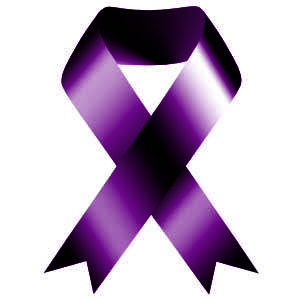
We Are the Youth is wearing purple today. After the recent rash of suicides among gay youth, the LGBTQ community and allies are coming together today to show solidarity with each other and to remember the lives lost.
According to event organizers, “Purple represents Spirit on the LGBTQ flag and that’s exactly what we’d like all of you to have with you: spirit. Please know that times will get better and that you will meet people who will love you and respect you for who you are, no matter your sexuality.”
This isn’t the end. This is the beginning. When you’re walking down the street others will see you and remember that they’re not alone.
As an endorser of the Make It Better Project, We Are the Youth believes that we all must join together to change the culture so queer teens aren’t afraid. To continue to tell queer youth they are not alone, please share your story with us. Email hello@wearetheyouth.org to tell your story.
T-1 Week!
In T Minus 1 Week, We Are the Youth will be traveling to/around the South, photographing and interviewing LGBT youth, and we couldn’t be more excited! Thanks again to all who donated on Kickstarter, making this trip possible and special thanks to Jordan for the write up on ATLBOY!
National Coming Out Day
Today is National Coming Out Day! National Coming Out Day was declared in 1988 in celebration of the Second March on Washington for Lesbian and Gay Rights which occurred one year earlier, in which 500,000 people marched on the capital. In honor of National Coming Out Day, We Are the Youth will be posting coming out interviews in a continuing effort to combat stigma, highlight the diversity of the LGBT community and give queer youth a space to share their stories.
The premise of National Coming Out Day is simple:
Political and social change towards freedom and equality comes from people speaking out about their support for freedom and equality, being proud of who they are, and putting names and faces to the LGBT community and the friends and allies who support that community.
Why? Because it’s harder to be a bigot or a homophobe or a bully when you know that some of your closest friends, family members, colleagues, and neighbors – and some of your favorite actors, artists, athletes, musicians, politicians, and cultural leaders, as well as many of the military servicemembers defending your country…are lesbian, gay, bisexual, or transgender. (Gayapolis News)
To share your story contact: hello@wearetheyouth.org

